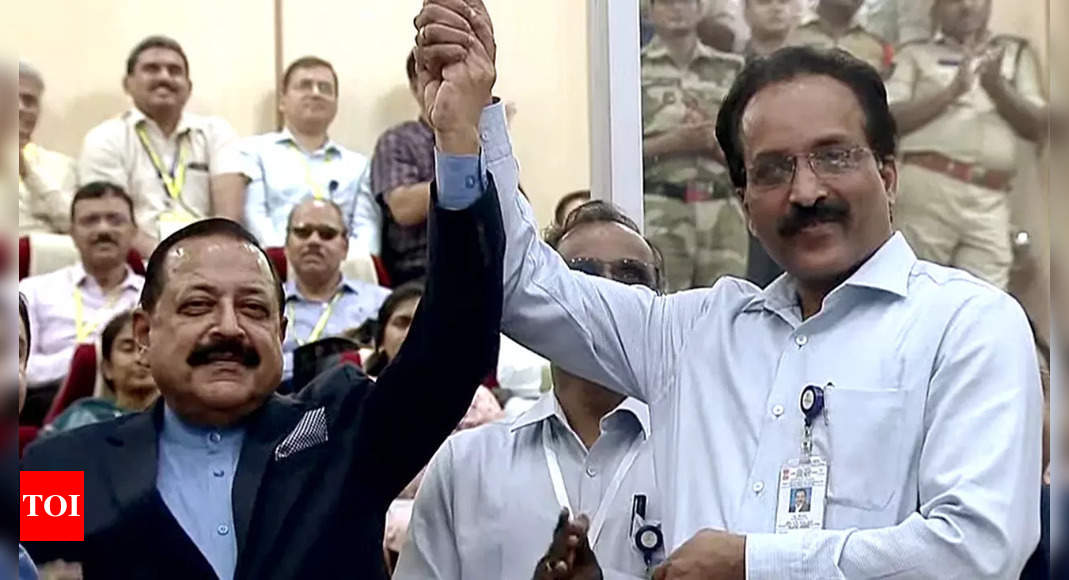[ad_1]
In an interview to
TOI
, Jitendra Singh, who witnessed the Chandrayaan-3 liftoff in Sriharikota, said, “Chandrayaan-1 was altogether a different mission as compared to all other space missions. This is because when India started its space journey in the early 1960s, then America was already busy with its Apollo manned missions to the Moon. Though the US had landed on the Moon decades ago, they had not found any evidence of water on the Moon in the past. Nasa was, however, very much interested in finding the possibility of any source (of water) that would sustain life on the Moon.”
The minister said, “When Chandrayaan-1 found the first concrete evidence of water molecules on the Moon (in 2009), then it started a new chapter in space research. Nasa also showed interest in our Moon mission. Hence, Chandrayaan-3 will dig deeper and continue the research that Chandrayaan-1 left and will try to find more evidence of water that may also give a possibility of setting up a human habitat on the Moon in future.”
Explaining the reason for picking the South Pole for moon landing, the minister told
TOI
, “The reason why we are going to the South Pole where no other country has ventured till now is that we want to explore the unexplored. We have received images of dark (permanently shadowed) craters on the Moon which hint that it could possess water. Doing experimentation after these findings will be easier once we land there. If Chandrayaan-3 finds more evidence of water, which consists of hydrogen and oxygen, then it opens up a lot of scientific opportunities. If hydrogen could be tapped from water, it could be a rich source of clean energy (on the Moon). These are markers of possibilities that could be of relevance for human living on the Moon that we are trying to explore from this mission.”
“Till now, most Moon exploration happened from either the Earth or from the Moon’s orbiter. But our Chandrayaan-3 will do in-situ experiments after landing. That means it will not be an Earth-to-Moon study but a study of the Moon from the Moon itself. Naturally, we will get a more in depth understanding of the Moon,” the minister said.
Explore space possibilities through lucrative startup ventures: Minister
At the G20 Young Entrepreneurs Alliance Summit in Delhi, space minister Jitendra Singh called upon young scientists and youth of the G20 nations to explore the space possibilities through lucrative startup ventures even in a joint mission mode to herald a new age of space entrepreneurship. He underlined the need for private-public partnership mode both at the national and international level, particularly among G20 countries, to vigorously pursue the business in space and other allied sectors.
The minister informed the gathering that out of 424 foreign satellites launched till date by India, 389 were launched in the last nine years of the Modi government. He also added that from January 2018 to till date, Isro has successfully launched over 200 foreign satellites belonging to major G20 countries, including the US, UK, France and Italy.
[ad_2]
Source link











More Stories
Congress replaces Kamal Nath, names an OBC as Madhya Pradesh chief | India News
Fire breaks out in ITBP camp in Srinagar; none hurt | India News
Parliament Security: Co-villagers give clean chit to Lalit Jha, parents to move court | India News